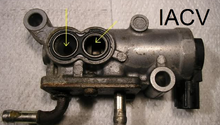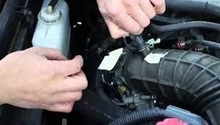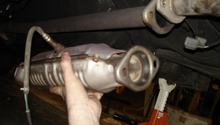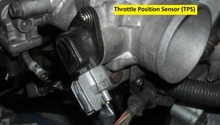Honda Civic: Why is My Idle Having Problems?
Figure out the root cause of your Civic's poor idle with the information below.
This article applies to the Honda Civic (1992-2000).
A Honda with a rough idle isn't terribly uncommon, especially in older Civics. Generally, a rough idle is caused from a difference in how much air the engine computer sees coming in, and how much is actually there. Typically, this is the fault of the idle air control valve, which is a commonly known point of failure on these cars. But there are a few other potential causes. Continue reading to find out what can cause your Civic to have idling problems.
Step 1 – Vacuum leaks or air intake leaks
A car with a vacuum leak can cause an unstable idle. An unplugged vacuum line (as well as a damaged air intake hose) creates discrepancy between how much air the engine's computer thinks it has, and how much it actually has. The result is a lopey idle, or a car that won't start. Typically, a vacuum leak of some sort will result in a high idle above 500 rpm.
The easy way to find out if there is a vacuum leak is to spray the hoses with starter fluid or brake cleaner. Make sure this is done on a cool engine. If any of the hoses are cracked or not sealed correctly, they'll suck in the vapor and the car's idle will change. This should help you find the general location of a leak. Listen closely, and you should be able to hear the hiss from the leak at hand.
Featured Video: How to Check For Leaky Vacuum Lines
Step 2 – Dirty throttle body
The throttle body itself might be dirty or damaged if the idle is higher than it should be. Typically, a dirty throttle body can cause a rough idle condition as the throttle plate cannot close properly.
To fix this, first remove the air intake hose. It attaches directly to the throttle body. Look for carbon buildup on the throttle plates. Unbolt the throttle body from the car to clean it with throttle body cleaner and a wire brush if there's noticeable gunk. Do not do this while the throttle body is still on the car. You don't want carbon chunks getting into the intake manifold and engine.
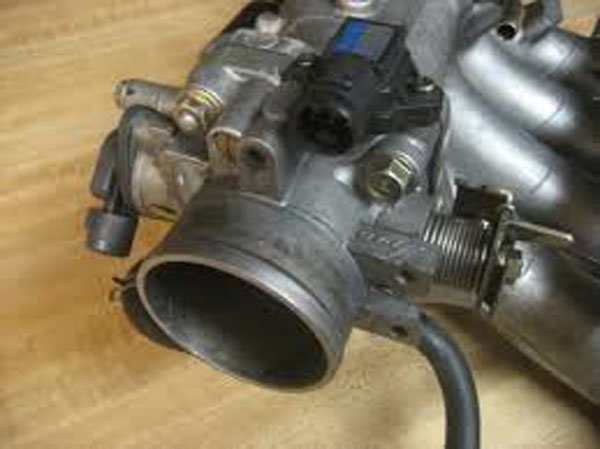
Step 3 – Bad intake air control valve (IACV)
The IACV is a common point of failure for the 1992 to 2000 era of Honda Civic. Its purpose is to meter the air flowing into the intake manifold at idle. Sometimes, the internals of this component can become dirty, affecting the closing and opening capabilities of the valve. A valve that won't open or close correctly will allow an incorrect amount of air into the engine. A failing IACV will result in a hunting idle (where the revs go up and down without accelerator input) or a lumpy idle (where the idle will fall until the ECU compensates and rises it again repeatedly).
To fix this, either replace the IACV or clean it.
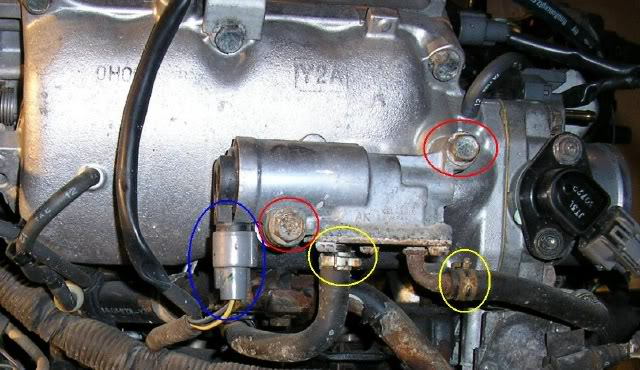
Step 4 – Maladjusted idle
Depending on the age of the car and whether or not it's been worked on by someone else prior, there's a chance that the car's base idle is off. If the IACV is working and there are no vacuum leaks or throttle body issues, this might be the problem.
To adjust the base idle, you'll need to start by warming up the engine to operating temperature (the cooling fan will come on). Disconnect the IACV. Rev the engine to 1,000 rpm, and slowly let it fall until it reaches idle. It should idle around 380 to 470 rpm range. If it's outside of that range, adjust the idle by turning the idle adjusting screw on the throttle body. Turn off the car.
Reconnect the IACV, and reset the ECU by unplugging the back-up fuse. Restart the engine, and the idle speed should be in the 620 to 720 rpm range.
Step 5 – Bad throttle position sensor
Replacing the entire throttle body is probably the best option if this is the case, but that's an expensive fix. Alternatively, the throttle body sensor itself can be replaced or readjusted.
Featured Video: How to Replace Throttle Position Sensor
Related Discussions
- Bad TPS or ECT Sensor - Honda-Tech.com
- Low coolant? Dirty IACV? Loose FITV (Fast Idle Thermal Valve) - Honda-Tech.com
- Check All Vacuum Leaks - Honda-Tech.com
- IACV Issues - Honda-Tech.com


